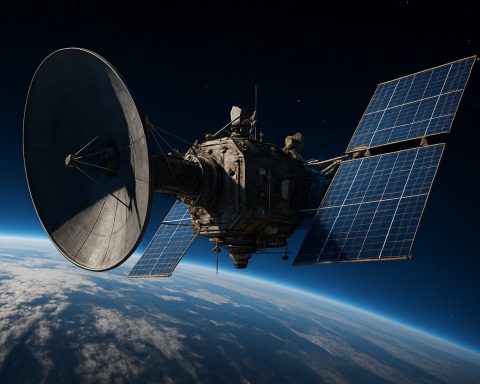Norway’s Andøya Spaceport is set to become a key player in the global satellite launch industry following a recent agreement. This Technology Safeguards Agreement (TSA) paves the way for the export of U.S. space technology, marking a pivotal moment for the facility’s future.
Cecilie Myrseth, the Norwegian Minister for Trade and Industry, emphasized the significance of this partnership, stating that it positions Andøya as a premier destination for satellite launches. The ability to cater to the U.S. satellite market, the largest in the world, is an enormous advantage for Norway.
The TSA functions as a protective measure to prevent unauthorized exposure of U.S. technology, ensuring a secure transfer of commercial launchers to Norway’s launch facilities. This arrangement aligns with similar agreements already established with countries like Australia, New Zealand, and the UK.
Bjørn Arild Gram, the Norwegian Minister of Defence, remarked on the strategic implications of this agreement for national security and international defense collaboration, particularly through NATO. The Andøya site is crucial for both Norway and its allies, underlining the strategic importance of space activity in defense operations.
Located on the northern coast of Norway, the newly opened Andøya Spaceport is designed to support launches for small satellites weighing up to 1.5 tons. With partners like Isar Aerospace already in place, the spaceport is poised to lead in small and medium-sized satellite launches, enhancing Norway’s position in Arctic space technology.
The Global Implications of Andøya Spaceport’s Emergence
As Norway’s Andøya Spaceport solidifies its place in the global satellite launch industry, the implications extend far beyond national borders, impacting society, culture, and the global economy. This development represents a significant shift in the competitive landscape of space exploration, particularly as private companies and nations alike race to capture lucrative satellite markets.
The economic ramifications are profound; the global satellite market is projected to grow to over $400 billion by 2025. Norway’s participation enables it to tap into this potentially explosive sector. By facilitating launches for small and medium-sized satellites, Andøya could attract investments, create jobs, and position itself as a central hub in the Arctic, facilitating broader international partnerships.
Culturally, the agreement signals a growing recognition of space as a shared human endeavor. As nations collaborate on space technologies, there’s the potential for enhanced scientific research and innovation resulting in cross-cultural exchanges that challenge traditional narratives of competition in favor of cooperation.
Environmentally, however, as launch activities increase, the long-term effects on the Arctic ecosystem must be considered. Striking a balance between technological advancement and environmental stewardship will be crucial. Increased space activity could lead to more debris in orbit and potential disruptions to local wildlife habitats.
Ultimately, the partnership formed through the Technology Safeguards Agreement is expected to herald future trends in which small and medium-sized satellite launches become a cornerstone of both commercial and defense strategies in a rapidly evolving geopolitical landscape.
Norway’s Andøya Spaceport: A Game Changer in Global Satellite Launches
Overview of Andøya Spaceport
Norway’s Andøya Spaceport is rapidly emerging as a pivotal player in the satellite launch industry, following its recent signing of a Technology Safeguards Agreement (TSA) with the United States. This groundbreaking agreement not only facilitates the export of U.S. space technology to Norway but also positions Andøya as a prime location for satellite launches.
Features of Andøya Spaceport
Andøya Spaceport is specifically tailored for the launch of small satellites, with capabilities to handle payloads of up to 1.5 tons. The facility is strategically located on Norway’s northern coast, which offers unique advantages for polar orbit launches, minimizing risks and optimizing trajectory paths for satellite deployment.
Key Advantages of the TSA
1. Enhanced Security: The TSA acts as a safeguard, ensuring that sensitive U.S. technology is protected during the transfer process. This security measure aligns Norway with existing agreements with key allies such as Australia, New Zealand, and the UK.
2. Market Access: By catering to the U.S. satellite market—the largest globally—Andøya Spaceport unlocks significant economic opportunities for Norway, attracting investment and fostering partnerships with U.S.-based aerospace companies.
Strategic Implications
Bjørn Arild Gram, Norway’s Minister of Defence, underscored how this agreement strengthens national security and NATO’s collective defense initiatives through enhanced space interoperability. The ability to conduct launches from Andøya enhances operational capabilities for both Norway and its allies, emphasizing the importance of space in contemporary defense strategies.
Partnerships and Collaborations
Already collaborating with companies like Isar Aerospace, Andøya Spaceport aims to lead in the field of small and medium-sized satellite launches. This collaboration is set to advance innovations in satellite technology and provide essential services in remote sensing, communication, and space research.
Pricing and Market Analysis
The launch services at Andøya Spaceport are expected to be competitively priced, providing an attractive option for international clients seeking reliable and efficient satellite deployment. As the global demand for small satellite launches continues to rise, Andøya is well-positioned to capitalize on this market trend.
Sustainability Practices
Andøya Spaceport is committed to sustainable practices in its operations, including minimizing environmental impact and promoting the use of eco-friendly technologies. As the space industry evolves, sustainability remains a key focus, making Andøya’s approach attractive to environmentally conscious stakeholders.
Future Predictions and Trends
Looking ahead, Andøya Spaceport is expected to become a hub for innovation in satellite technology. As the global satellite launch market grows, countries like Norway are anticipated to play an increasingly significant role. With the increasing need for satellite-based services, such as GPS and telecommunications, the demand for launch facilities like Andøya is projected to surge.
For more information about the future of satellite technology and space exploration, visit Norway’s official website.









